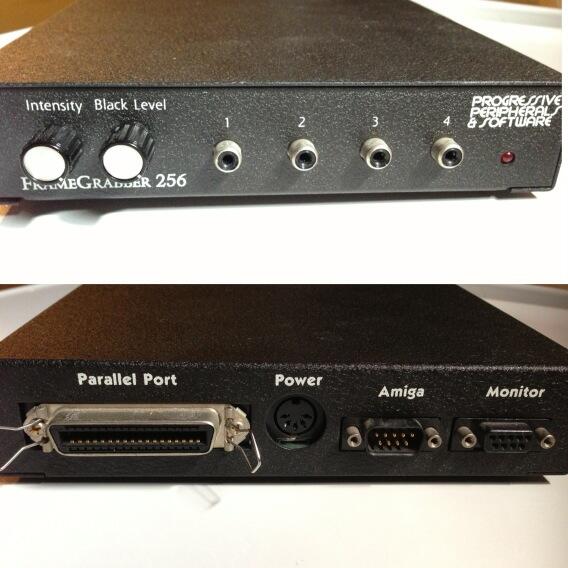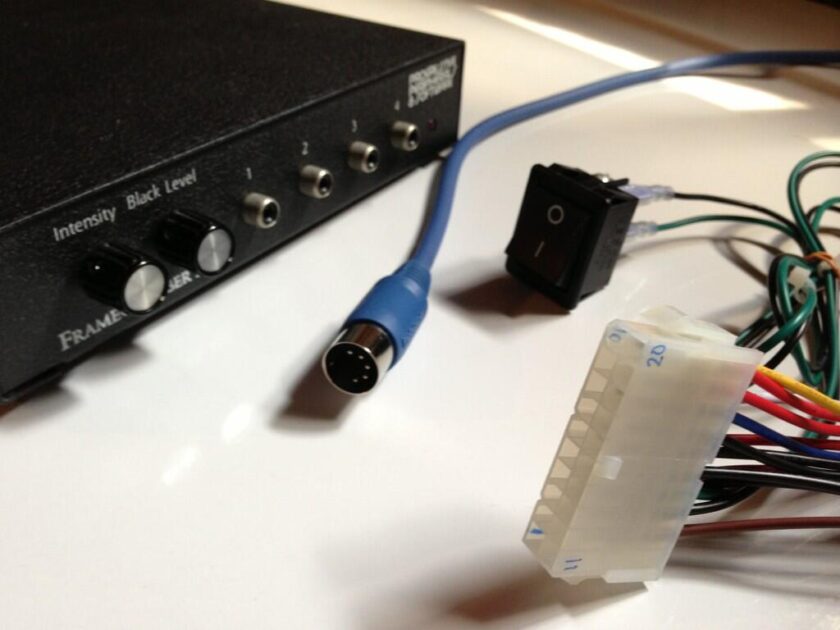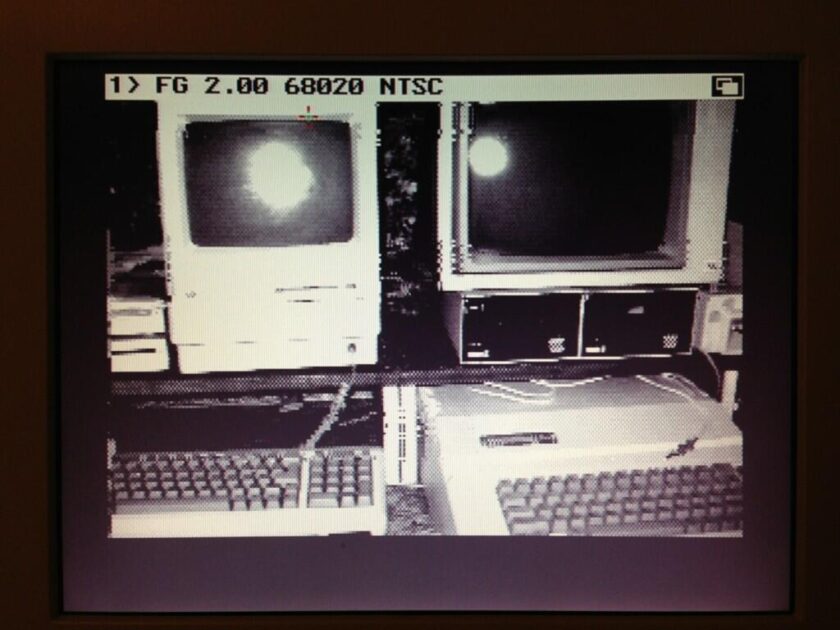The Frame Grabber 256 by Progressive Peripherals and Software (PP&S) is a video frame digitizer capable of capturing a single frame from moving video in up to 256 shades of gray. There was also a color version simply called Frame Grabber. I owned the color version in the late 80’s/early 90’s but eventually sold it to fund other things.

A few years ago, I won an eBay auction that was a Commodore grab bag. Among the items was the Frame Grabber 256 hardware box but nothing else. It was missing the manual, the software and the power supply. My search for these items came up cold and I shelved it.
The unit is very interesting since it can drive an Amiga monitor natively and display the NTSC video through it, without the aid of the computer to process it.
Recently, my interest was renewed so I began looking again and I struck gold. I’ll share the wealth with you below.
- The software can be downloaded here as a disc image. It includes a version 1 and 2 of the software.
- Both versions of the manual can be found at archive.org. Version 1 is here and version 2 is here.
- Information about the power supply can be found at the Big Book of Amiga Hardware site here.
It’s important to note the power supply and the pin-out that’s printed on top of it uses a numbering scheme in the diagram that is very wrong.

The pin numbers/layout are wrong. The position and values are correct. The locations and their corresponding values are correct though. When you go searching for a suitable power supply, you’ll need to use the following.
- Pin 1: COM
- Pin 2: GND
- Pin 3: +5v
- Pin 4: -12V
- Pin 5: +12V
The correct pin layout:


Instead of purchasing a new power supply, I created an adapter cable for an ATX power supply. I used the table below for the connections.
- DIN Pin 1 to ATX Pin 13
- DIN Pin 2 to ATX Pin 3
- DIN Pin 3 to ATX Pin 4
- DIN Pin 4 to ATX Pin 12
- DIN Pin 5 to ATX Pin 10
You can get a 3 pack of 3ft MIDI cables for the DIN portion for $1.97 at Radio Shack. They will price match in the store. It’s an unusual bargain. Unlike most MIDI cables, these have all five pins connected.

It goes without saying, I’m not responsible for any damage that may succumb to your gear. Double check everything with a second source!
Moment of truth came and I connected it to my Amiga 4000 via a parallel cable, and connected a small point and shoot digital camera that has an NTSC video out cable. Success! There’s some tearing in the image along the way that might be caused by a bad video cable but otherwise it looks like it’s working.
Rikk Crill
February 28, 2023 at 11:10pmA few friends and I designed and built this framegrabber as a side project (we had other jobs). Progressive Peripherals and Software marketed it for us. I still have the prototype somewhere.
paulrickards
March 1, 2023 at 11:03amThanks for sharing– that’s fascinating to learn! Can you tell me more about the project, how you and your friends came about it, who designed the software, etc? Do you have any pictures of the prototype that you can share? Do you have an Amiga to see if it still works?
Rikk Crill
March 6, 2023 at 11:57amPaul,
We had made a grayscale framegrabber for the IBM PC which didn’t really sell, so we had already dipped our toes in the video framegrabber world. One of our group of four had an Amiga and really wanted to make a color device, so we went for it. As I remember we sold about 1,500 through PPS which wasn’t bad for a weekend/evening type project. Although it was a LOT of evenings and weekends.
I designed and wrote the software and designed the basic hardware architecture. One of my friends was an analog Guru and another was experienced in digital, so between them they designed the circuitry. I did the initial board layout and PPS had someone run it through more sophisticated tools to clean it up before manufacturing. All of us burned countless hours on debug.
PPS had someone do the graphical design for the box (and they got the power pinout reversed) and they wrote the manuals (based on a stack of papers we gave them). And they did the packaging. Complete with the silly “Now with Hyper Screen Technology”, if I remember the the box correctly, which referred to the “venetian blind” effect that was purely due to our memory access technique and didn’t really speed up anything at all.
I have the first clean production prototype somewhere in storage, so I don’t have pictures handy. And I don’t have software, box, or manuals. Nor do I have a working Amiga to test it. I’d probably want to recap it before trying anyway. I did see somewhere on the web where the software and manuals (I think) were available for download. If someone wanted to try to resurrect it I’d be willing to find it and send it to them…although I’d like it back later.
Cheers, Rikk
Douglas (10MARC)
November 1, 2023 at 3:19amIt is always so wonderful when we see one of the creators of awesome hardware or software make an appearance! Thanks for sharing the story about your invention, Rikk!
I got one from eBay a few months back, but still need to make the power supply adapter for it. One of these days…